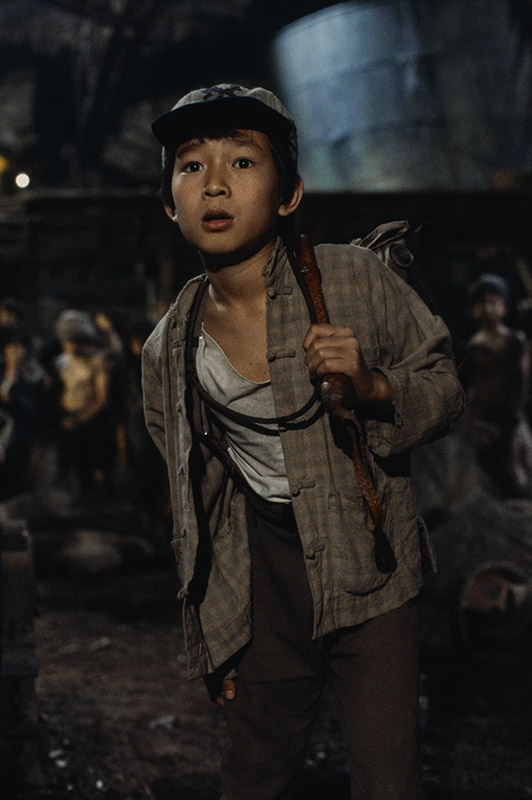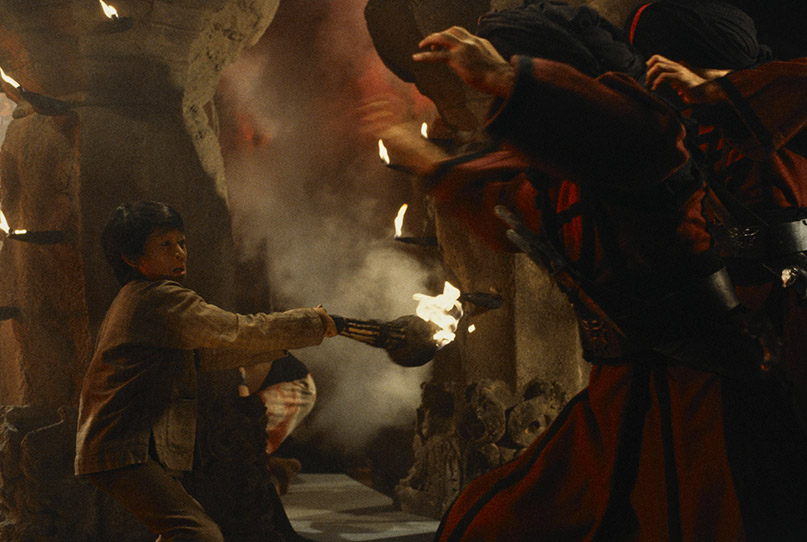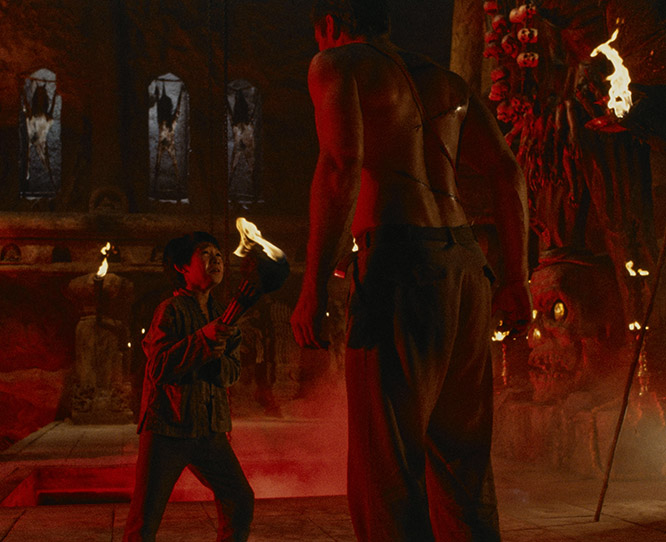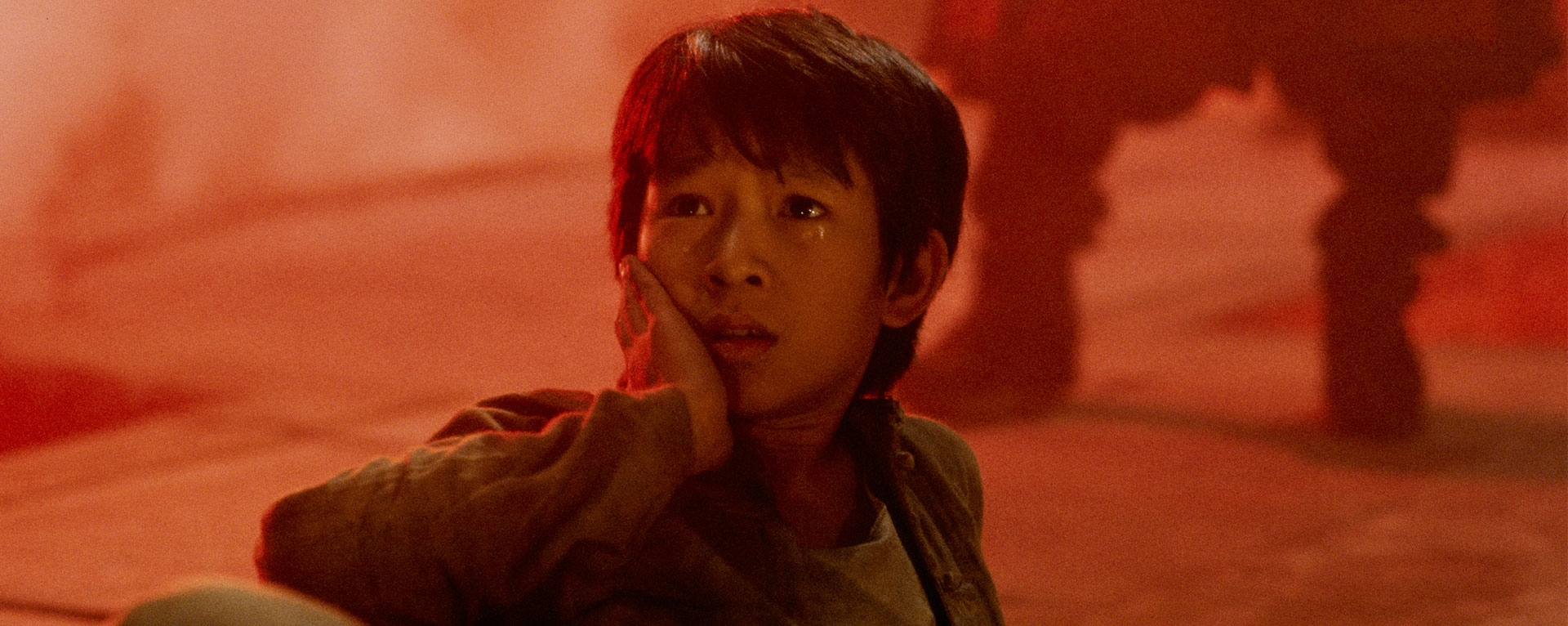Defining Moments: Short Round’s Choice
Indiana Jones is nothing without his friends.
“Defining Moments” is a continuing series exploring key scenes or sequences from Lucasfilm’s many productions. It examines storytelling craft, behind-the-scenes insights, and cultural legacies from each selection. Revisit an old favorite or discover something brand new…
Production: Indiana Jones and the Temple of Doom (1984)
Heroic acts are not usually accomplished alone. Indiana Jones and the Temple of Doom (1984) celebrates its 40th anniversary this year. Its story is one of personal redemption through compassion. At the heart of this is the relationship between Indy (Harrison Ford) and Short Round (Ke Huy Quan), and as the movie unfolds, we discover that it’s in fact the older, stronger Indy who needs the younger Short Round’s help.
Indiana Jones has shown an aptitude for making friends. Shorty becomes his companion after trying to pick his pocket in the streets of Shanghai. The child is self-assured and intensely loyal to the archaeologist. Indy becomes quite affectionate towards Short Round, a sort of father figure. They form a partnership.

Indiana Jones has shown an aptitude for making friends. Shorty becomes his companion after trying to pick his pocket in the streets of Shanghai. The child is self-assured and intensely loyal to the archaeologist. Indy becomes quite affectionate towards Short Round, a sort of father figure. They form a partnership.
After Indy, Short Round, and a third companion – singer Willie Scott (Kate Capshaw) – escape Shanghai, they become stranded in the mountains of northern India. Each member of the trio is preoccupied with a specific desire: Indy to return to his university; Willie to return to her glamorous life on the stage; and Short Round to remain at Indy’s side and keep him safe. Only then does a new complication arise. A local village is in need. Their children have been kidnapped and their precious Sankara Stone stolen.
Indy agrees to visit Pankot Palace in order to help solve the mystery, and perhaps uncover an ancient artifact that would bring him“fortune and glory.” As the adventure unfolds and they proceed deep into a perilous temple, Indy’s motivations seem conflicted. They discover the missing children, chained and whipped into forced labor by an evil Thuggee cult. But they also discover the wondrous Sankara Stones. There are hints of compassion within him, but also hints of covetousness. Soon, they are taken prisoner, and Indy is forced into the supernatural “black sleep,” losing his sense of self and becoming an obedient drone.
In The Hero with a Thousand Faces – the book that influenced George Lucas in all of his storytelling – the mythologist Joseph Campbell discusses the “hero’s journey,” the process by which individuals find self-actualization, and a common archetype in historic myths. Among the stages which the hero takes is the “belly of the whale,” the place of self-confrontation. In order to become their fullest self, the hero must confront who they are by going within.
“Instead of passing outward, beyond the confines of the visible world, the hero goes inward, to be born again,” Campbell writes. “The disappearance corresponds to the passing of a worshiper into the temple – where he is to be quickened by the recollection of who and what he is, namely dust and ashes unless immortal. The temple interior, the belly of the whale, and the heavenly land beyond, above, and below the confines of the world, are one and the same.” For Indy, the depths of Pankot Palace, the children in need, the alluring Sankara Stones, and the engulfing power of the black sleep are this stage.

And so it is Short Round – himself forced into bondage with the other children – who must help Indy to break through. The Thuggee organize another human sacrifice, and Willie is to be the victim. Under his trance, Indy goes along with the ritual. Writer James Kahn would describe the scene in his novelization of Temple of Doom, “Shorty whispered to himself. ‘Indy, no.’ The chanting was so loud it almost drowned out his thought. But he knew what he had to do. He had to be Indy’s pinch hitter. He had to wake Indy up. He had to pull Willie out.”
Through his own cleverness and strength of will, Short Round breaks free and runs into danger to save his friends. He attempts to stop the ritual and talk Indy out of his complicity. Instead, the man smacks his young friend to the ground. “Blood trickled from the corner of Short Round’s mouth as he stared at his hero in wounded disbelief,” James Kahn writes. “The moment didn’t last long, however; it only forged, for Shorty, the notion of what he had to do. It would be hard for him, but what, in this life, was not hard?”
Short Round then grabs a torch and yells, “Indy, I love you!” burning the man’s flesh, and yelling again, “Wake up, Indy!” Through the innocent heroism of his young friend, Indy is free to become a more fulfilled person. After they defeat their remaining foes and free Willie from her cage, Indy and Short Round exchange each other’s hats, symbolizing how one makes the other who they are. They embrace with sincere affection, and Short Round only has to say, “Indy, my friend…” The invigorated archaeologist is adamant that everyone will escape the temple. As the next sequence begins, Indiana Jones is revealed in a spotlight, and as John Williams’ resounding score is heard, we see a hero come into his own.
It is only through the compassion and care of others that we can become our fullest selves. There is no heroic Indiana Jones without Short Round, and without all the many friends who support his journey. In Temple of Doom, Indy learns that the best way to help himself is to help others.

Lucas O. Seastrom is a writer and historian at Lucasfilm.
—
Lucasfilm | Timeless stories. Innovative storytelling.

